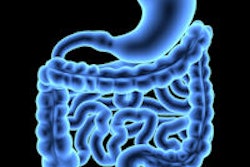Patients with gastrointestinal disorders may be exposed to significant doses of radiation from abdominal CT over time, concludes a new study in Clinical Gastroenterology and Hepatology. Researchers found higher levels of annual and total diagnostic radiation exposure in these patients.
Radiation levels have risen along with increased CT use over the past several years, particularly in patients with inflammatory bowel disease (IBD) and organic small bowel and hepatic disorders, mostly due to repeat CT scanning, wrote Dr. Alan Desmond and colleagues from Cork University Hospital.
"The most concerning finding might be that more than half of patients with cumulative exposure exceeding the 90th percentile were younger than 35 years old at last clinical contact," they wrote (Clin Gastroenterol Hepatol, March 2012, Vol. 10:3, pp. 259-265).
The researchers analyzed data from 2,509 patients who were diagnosed with gastrointestinal (GI) disorders between January 1999 and January 2009. Diagnostic imaging exams were performed on 57% of the patients (1,429 of 2,509). High annual cumulative effective dose and high total cumulative effective dose were defined as figures exceeding the 90th percentile for the population.
Higher levels of annual and total diagnostic radiation exposure were associated with IBD and other gastrointestinal disorders, according to the authors. High annual dose rates (> 9.6 mSv/year) were associated with Crohn's disease, organic small bowel disease, and functional disorders of childhood and adolescence. High total dose rates (> 30.8 mSv) were associated with Crohn's disease, ulcerative colitis, and indeterminate colitis, along with non-IBD diagnoses, Desmond and colleagues wrote.
"The clinical benefits of widely available diagnostic imaging of the GI tract are not in doubt," the group wrote. "This is particularly true for patients with disorders such as Crohn's disease, who often require abdominal imaging to establish the extent of their disease and to detect extramural complications." But the use of diagnostic imaging in functional GI disorders has not been subjected to rigorous study, and the benefits in this population are therefore not as immediately evident, they wrote.
Alternative, radiation-free imaging modalities including ultrasound, capsule endoscopy, and MRI are available. These modalities do have drawbacks, though, making CT the standard imaging modality, the group added. Dose-reduction techniques are increasingly available for CT; however, use of the lowest possible dose is particularly important when imaging women and children.



















